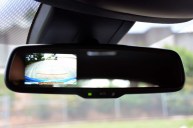Automakers must wait longer than ever to see their safety technology achieve 95 percent of adoption on all new vehicles.
According to CNET Roadshow, citing the Highway Loss Data Institute, an independent organization focusing on the prevention of motor vehicle crashes, the process of introducing new concepts to market can take up to 30 years.
One example includes the modern three-point seatbelt, invented by Volvo, which entered production in 1959 before being introduced as standard in new cars until well into the 1980s. A second, the factory CD player by Mercedes-Benz, also took decades to become standard. Crash tests and safety ratings only tell part of the story. The requirement of safety features that include significant occupant protection measurements moves at a rate seen as unacceptable.
At this rate, the Highway Loss Data Institute suggestions that current technologies such as parking sensors could show up as standard as late as 2039 on 95 percent of registered vehicles. Likewise for rear parking sensors by 2041 and a complete warning suite (forward collision, blind-spot monitoring and lane departure warning systems) by 2043.
Others projected include auto brakes by 2031 and adaptive headlights sometime after 2050.
With today's innovative progress, do you think we'll see the same pace? We can all hope to make smart decisions based on the safety information we can access, but this side of things needs to speed up.
NEXT: JUST WHAT WE'VE ALWAYS WANTED: A CLASSIC LEGO MUSTANG
WATCH




